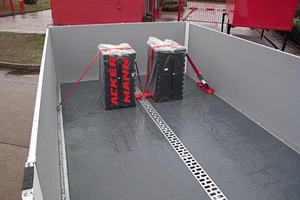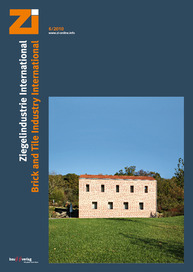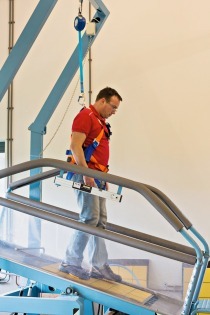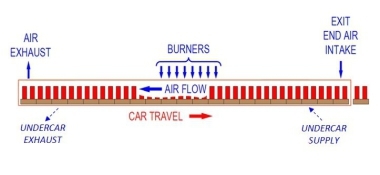Skidproof pallets – even out in the rain
struction material trailer is not only much lighter than the usual models (less than three tons kerb weight instead of over four tons) but also has a load-securance system that the TUL-LOG technology centre deems excellent. The Dresden-based experts test-inspected the trailer‘s innovative, one-piece cargo floor made of composite material with a skidproof coating. The friction values of different cargo types were ascertained, and the bed was found to take much of the credit for cargo safety: the coefficient of sliding friction tells how much resistance the floor puts up to keep the load from sliding. Standard-type wooden-panel vehicle beds have a sliding-friction coefficient of roughly 0.25 µ for euro pallets – if the bed is clean and dry. Ackermann‘s new compound flooring, though, offers up to 0.68 µ, or two and a half times as much resistance. Similarly high coefficients of sliding friction were determined for other types of cargo, as well. Perhaps even more important, though, are the wet-weather findings. The sliding friction between many wet materials is less than half that of the dry-state level, so the cargo requires accordingly ample securing. Not on this composite bed, though: at 0.66 µ, its loss of friction is hardly noticeable.
No anti-skid mattes are needed. Simple lashing suffices to keep the load properly secured on euro pallets or one-way pallets. That, by the way, is an easy matter in this vehicle, which has a longitudinal heavy-load anchor rail mounted flush in the floor with numerous two-ton anchor points offering innumerable securing options for partial loads.




